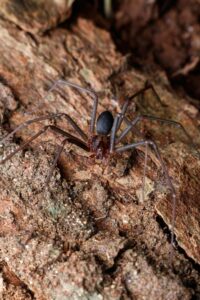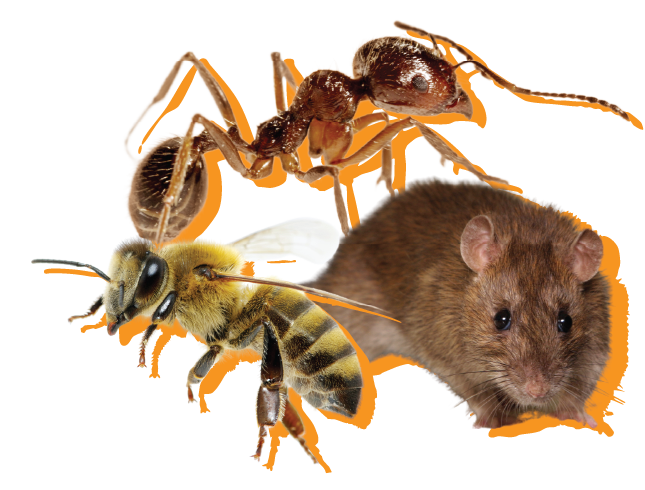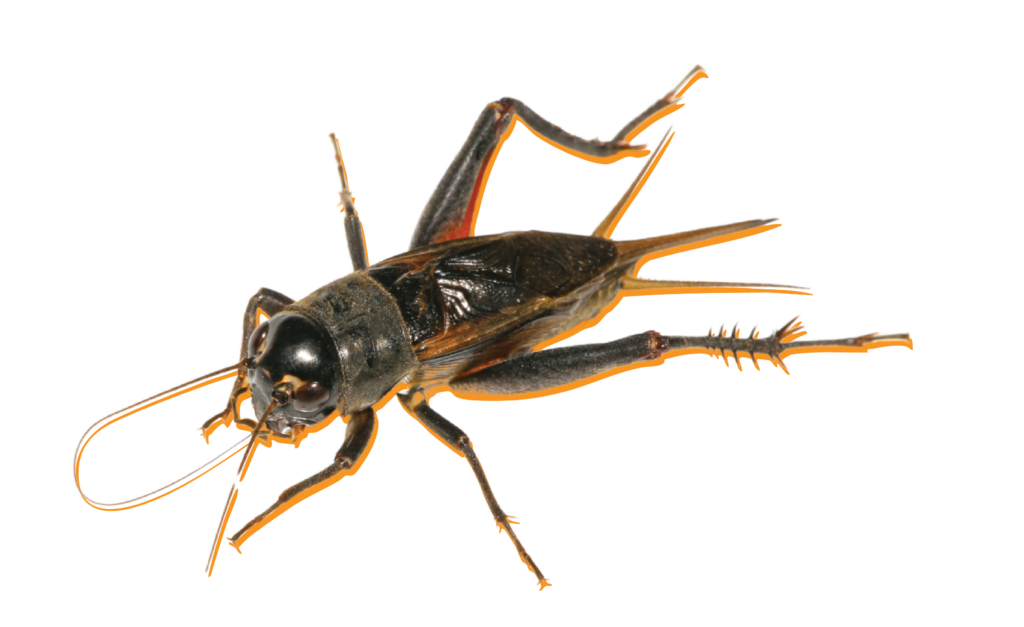Table of Contents
- Key Points
- Venomous Spiders
- Other Biting and Stinging Insects
- What to Do If You Are Bitten or Stung
- Protecting Your Home and Family
- References
Key Points
South Carolina’s lush landscapes and warm climate, while beautiful, are also home to more than 100,000 species of insects and arachnids,1 some of which possess a painful or even dangerous bite or sting. While most encounters with these creatures result in nothing more than a minor annoyance, it is crucial for every homeowner and outdoor enthusiast in the Palmetto State to be able to identify potentially venomous spiders and other biting insects. Knowing what you are dealing with can help you take appropriate precautions, seek timely medical attention (if necessary), and ultimately ensure the safety and well-being of yourself and your family.
Knowledge is the first line of defense against pests. This comprehensive guide will walk you through the identification of some of the most concerning venomous spiders and biting insects found in South Carolina, offering key characteristics, habitat information, and tips on how to avoid encounters.
Venomous Spiders
South Carolina is home to four venomous spider species that possess venom potent enough to cause significant reactions in humans.2 Familiarizing yourself with their appearance and habits is essential.
1. The Brown Recluse Spider (Loxosceles reclusa)
The brown recluse is one of the most feared spiders in North America. While not aggressive (which minimizes human encounters), it possesses a necrotic venom that can cause serious tissue damage.

- Identification: These spiders are typically light to medium brown in color and have a distinctive darker brown, violin-shaped marking on their cephalothorax (the body part just behind the head). One of their primary identifying characteristics is their six eyes arranged in three pairs (unlike most spiders, which have eight). Their legs are long, thin, and uniformly colored without bands or spines, and adult brown recluses are between 1/4 and 1/2 of an inch, including their leg span.3
- Habitat: Brown recluse spiders prefer dark, secluded areas such as closets, attics, basements, under furniture, and inside boxes. They are often found in undisturbed areas and can be transported indoors in cardboard boxes or old clothing.
- Bite Symptoms: A brown recluse bite is often initially painless, and the victim may not even realize they have been bitten. However, within hours, redness, swelling, and localized pain may develop. A characteristic blister often forms at the bite site, which can eventually ulcerate and lead to a necrotic lesion. Systemic symptoms like fever, chills, and nausea are rare but can occur.
- Prevention: There are a few things you can do to reduce the chances of brown recluse encounters. Eliminating clutter in storage areas is a big one. Also, wear gloves when handling boxes or working in dark spaces, shake out clothing and shoes before wearing them, and seal cracks and crevices in your home’s foundation and walls.
2. The Black Widow Spider (Latrodectus mactans)
The female black widow is easily recognizable and possesses a potent neurotoxic venom. While bites are rarely fatal, they can be quite painful. There are two species of black widow spiders in South Carolina: the northern black widow and the southern black widow.4
- Identification: Adult female southern black widows are glossy black with a distinctive red or orange hourglass-shaped marking on the underside of their abdomen. Northern black widow females look the same, though they can have colored splotches or dots, instead of the hourglass shape. Males of both species are smaller and often have red or white bands on their abdomen. Juvenile females may also have different markings.
- Habitat: Black widows prefer sheltered locations such as woodpiles, under rocks, in hollow logs, around foundations, and in outdoor sheds or other structures. They spin irregular, tangled webs.
- Bite Symptoms: A black widow bite typically feels like a sharp pinprick, followed by dull, aching pain that can spread to the chest, abdomen, and back. Muscle cramps, nausea, sweating, and difficulty breathing can also occur. Symptoms usually subside within a few days.
- Prevention: Wear gloves when working outdoors, especially around woodpiles and rocks. Inspect outdoor structures before use. Also, be cautious in dark, undisturbed areas.
3. The Brown Widow Spider (Latrodectus geometricus)
A relative of the black widow, the brown widow is becoming increasingly common in the southeastern United States, including Upstate South Carolina. While their venom is considered more potent than the black widow’s, they are generally less aggressive and inject less venom when they do bite.
- Identification: Brown widows vary in color from light tan to dark brown and have a distinctive orange or yellowish hourglass marking on their underside. Their egg sacs are quite distinct: spiky and tan in color and not attached to any flat surface.5
- Habitat: Brown widows are often found in urban and suburban areas, building their webs under eaves, in outdoor furniture, around potted plants, and in other protected locations.
- Bite Symptoms: Brown widow bites are usually less severe than black widow bites. Local pain, redness, and swelling are common. Systemic symptoms are rare.
- Prevention: Similar to the precautions related to black widows, exercise caution when working outdoors and inspect potential hiding spots.
Other Biting and Stinging Insects
While spiders often get the most attention, several insect species in South Carolina can deliver painful bites or stings, sometimes with significant consequences.
1. Bees, Wasps, and Hornets (Order Hymenoptera)
These stinging insects are common throughout South Carolina and can deliver painful stings, especially if their nests are disturbed. For individuals with allergies, these stings can cause serious health problems and can even be life-threatening (anaphylaxis).
- Identification: Bees are typically fuzzy and have a more rounded body. Wasps are more slender with a distinct “waist.” Hornets are larger and more aggressive than wasps. Different species vary in color (yellow, black, brown).
- Habitat: Bees often nest in hives or underground. Wasps build paper nests in trees, under eaves, or in other sheltered locations. Hornets also build paper nests, often high up in trees.
- Sting Symptoms: Localized pain, swelling, redness, and itching are common. Allergic reactions can include hives, difficulty breathing, swelling of the throat and tongue, dizziness, and a drop in blood pressure.
- Prevention: Avoid disturbing nests. Wear light-colored clothing and avoid strong perfumes or scented lotions, which can attract these insects, when outdoors. Be cautious when eating or drinking sweet substances outdoors. If you have a known allergy, you might consider carrying an epinephrine auto-injector (EpiPen) at all times.
2. Fire Ants (Solenopsis invicta)
These aggressive ants are easily identified by their reddish-brown color and their tendency to swarm and deliver multiple painful stings when their mounds are disturbed. They are prolific throughout the state.
- Identification: Fire ants are small (1/8 to 1/4 inch long) and reddish-brown. They live in large colonies with characteristic mounds of loose soil.
- Habitat: Fire ant mounds are common in lawns, fields, and disturbed areas throughout South Carolina.
- Sting Symptoms: Fire ant stings result in immediate burning pain followed by the formation of a characteristic white pustule within 24-48 hours. Multiple stings can be particularly painful and may cause allergic reactions in some individuals.
- Prevention: Avoid disturbing fire ant mounds. Wear shoes when walking in grassy areas. If you encounter a mound, walk around it. If you are stung, avoid scratching the area to prevent infection.
3. Ticks (Class Arachnida, Order Ixodida)
While technically arachnids, ticks are biting pests in South Carolina that get attention due to their ability to transmit various diseases.
- Identification: Ticks are small, blood-sucking parasites that vary in size and color depending on the species and life stage. Common species in South Carolina include the deer tick (black-legged tick), the lone star tick, and the American dog tick.
- Habitat: Ticks are found in wooded areas, tall grass, and leaf litter. Contrary to popular opinion, ticks do not jump, but wait on vegetation and attach to passing hosts, like humans, pets, and wildlife.
- Bite Symptoms and Disease Transmission: Tick bites are often painless initially. However, ticks can transmit serious diseases such as Lyme disease, Rocky Mountain spotted fever, ehrlichiosis, and others. Symptoms of these diseases can vary widely and may include fever, rash, headache, and muscle aches.
- Prevention: Wear long pants, long-sleeved shirts, and socks when in wooded or grassy areas. Use insect repellent containing DEET, picaridin, or other EPA-approved ingredients. Check yourself and your pets thoroughly for ticks after spending time outdoors. Remove attached ticks carefully with fine-tipped tweezers.
4. Chiggers (Trombiculidae family)
These tiny creatures are the larval stage of trombiculid mites and are notorious for causing intensely itchy bites.
- Identification: Chiggers are very small (almost microscopic), typically red or orange in color.
- Habitat: Chiggers are found in tall grass, weeds, and wooded areas with high humidity.
- Bite Symptoms: Chigger bites are usually painless initially, but intense itching develops within a few hours and can persist for many weeks. Small, red welts or bumps appear, often in clusters, particularly around ankles, waistbands, and other areas where clothing is tight.
- Prevention: Wear protective clothing, use insect repellent, and avoid walking through tall grass and weeds. Take a hot shower and wash clothing after being outdoors.
5. Horseflies and Deer Flies (Family Tabanidae)
These large, biting flies are common during warmer months and can inflict a painful bite.
- Identification: Horseflies are large flies, often gray or brown, with large, prominent eyes. Deer flies are smaller and often have dark bands on their wings.
- Habitat: These flies are often found near water sources, in wooded areas, and around livestock. They are most active during daylight hours.
- Bite Symptoms: The bite of a horsefly or deer fly can be quite painful and may result in a raised, itchy welt that can sometimes bleed.
- Prevention: Wear light-colored clothing, use insect repellent, and avoid areas where these flies are abundant, especially during peak activity times.
What to Do If You Are Bitten or Stung
In the event that you do encounter any of the above pests are bitten, there are some basic steps you should take.
- Remain Calm: Try to stay calm to assess the situation.
- Identify the Culprit (If Possible): If you saw what bit or stung you, try to remember its appearance. This information can be helpful for medical professionals.
- Wash the Area: Gently wash the bite or sting site with soap and water.
- Apply a Cold Compress: This can help reduce swelling and pain.
- Seek Medical Attention: Seek immediate medical attention if you experience severe symptoms such as difficulty breathing, swelling of the face or throat, dizziness, or hives. If you suspect a brown recluse or black widow bite, it is also important to consult a doctor.
- For Bee Stings: If the stinger is visible, carefully remove it by scraping it sideways with a credit card or fingernail. Avoid squeezing the venom sac.
- For Tick Bites: Remove the tick carefully with fine-tipped tweezers, grasping it as close to the skin’s surface as possible and pulling upward with steady, even pressure. Do not twist or jerk the tick. Clean the bite area with antiseptic. Monitor for signs of illness in the following weeks.
Protecting Your Home and Family
While being vigilant outdoors is crucial, taking steps to manage pest populations around your home can significantly reduce the risk of encounters with venomous spiders and biting insects.
- Regular Pest Control Services: Professional Greenville pest control services can help identify and eliminate existing pest infestations and implement preventative measures to keep these unwanted guests away.
- Maintain Your Yard: Keep your lawn mowed, trim shrubs and trees, and remove leaf litter and debris where pests can hide.
- Seal Entry Points: Seal cracks and crevices in your home’s foundation, walls, and around windows and doors to prevent spiders and insects from entering.
- Proper Storage: Store firewood, lumber, and other outdoor materials away from your home’s foundation.
Learn More About Venomous Spiders and Biting Insect Prevention
South Carolina’s natural beauty comes with the responsibility of understanding and respecting its wildlife, including spiders and insects. By familiarizing yourself with their identification, habitats, and the symptoms of their bites or stings, you can take proactive steps to protect yourself and your loved ones.
At Precision Pest and Wildlife Removal, we are committed to providing effective and safe treatments for your home and property. If you have concerns about venomous spiders or other biting insects around your Greenville, SC home, do not hesitate to contact us for expert advice and professional services. Our technicians can recommend solutions that eliminate pests and keep them away for good.
References
- Eleanor Nash, “What do you want to know about SC’s bugs? Submit your questions here for an insect expert,” The Sun News, https://www.myrtlebeachonline.com/news/local/article277743323.html.
- Patrick McCreless, “Here’s the truth about the 4 venomous spider types in SC and how to keep them out of your home,” The State, November 23, 2023, https://www.thestate.com/news/state/south-carolina/article282201033.html.
- “Brown recluse spiders: Facts, bites & symptoms,” Live Science, March 2024, https://www.livescience.com/39996-brown-recluse-spiders.html.
- Christopher Carlton, “Latrodectus mactans and L. variolus, Southern and Northern Black Widow Spiders (Araneae: Theridiidae),” Louisiana State University Ag Center, retrieved on April 21, 2025, from: https://www.lsuagcenter.com/articles/page1636498333796.
- Richard S. Vetter, “Brown Widow Spider,” Center for Invasive Species Research, University of California Riverside, https://cisr.ucr.edu/invasive-species/brown-widow-spider.


